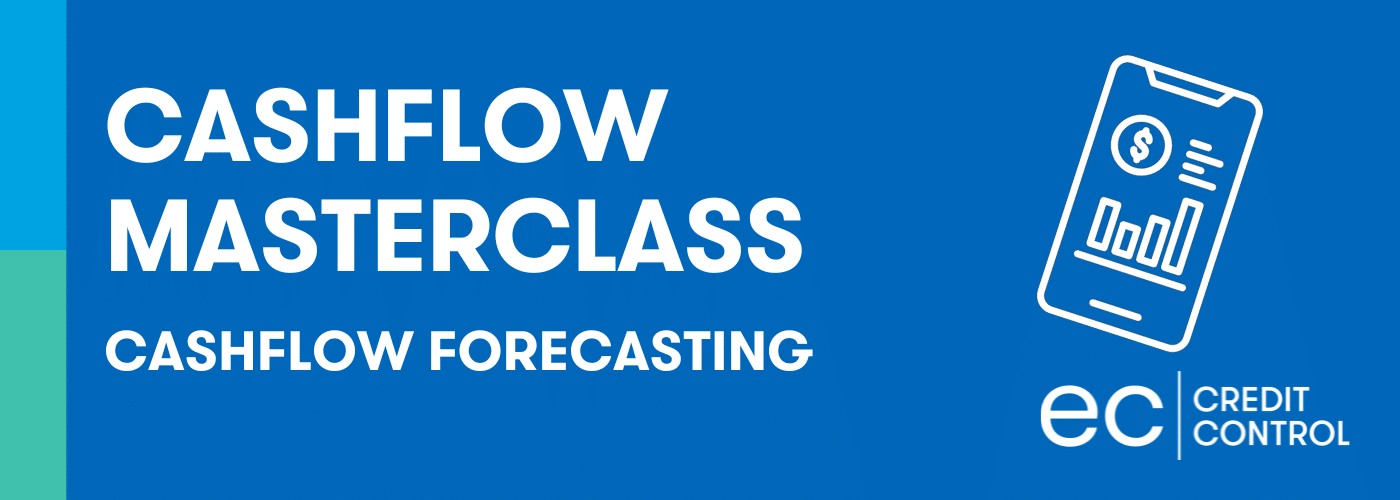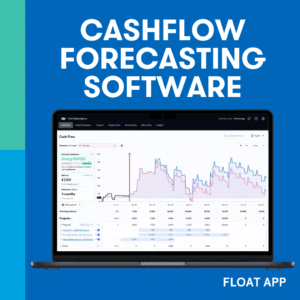
Cashflow Masterclass – Cashflow Forecasting
As part of our commitment to improving the financial wellbeing of our clients, we are educating business owners about the fundamental principles of cashflow management with our cashflow masterclass series.
In this article we deep dive into cashflow forecasting, why it is so essential, how to produce a cashflow forecast and a free downloadable template to create your own cashflow forecast.
Let’s dive in…
Why is cashflow forecasting such an essential tool for business?
A cashflow forecast is an essential tool for businesses of all sizes, from startups to established companies. It offers a forward-looking perspective on a company’s financial health by predicting the inflows and outflows of cash over a specific period, usually on a weekly or monthly basis. A cashflow forecast provides many benefits for businesses including;
Improved Financial Planning and Stability
Cashflow forecasts enable businesses to anticipate future cash needs and manage liquidity effectively. By predicting the flow of cash, companies can plan for upcoming expenses, such as payroll, supplier payments, and taxes. Without this foresight, businesses risk falling short of cash at crucial moments, which can lead to disruptions in operations, missed opportunities, or even insolvency.
A well-maintained forecast allows companies to maintain the right balance between incoming and outgoing funds, ensuring they can cover their obligations without overextending or incurring unnecessary debt. This planning tool helps safeguard financial stability and prevents cash crunches that might otherwise go unnoticed.
Informed Decision-Making
A cashflow forecast provides valuable insights that can guide strategic decision-making. Whether it’s expanding operations, hiring new staff, or investing in new products, businesses need to know how these decisions will impact their financial health. With a forecast, management can simulate various scenarios, weigh potential risks, and make informed decisions based on the company’s projected cash position.
For example, if a forecast indicates a shortfall in the upcoming months, the business might opt to delay a planned investment or secure a loan in advance to cover the gap. Similarly, if excess cash is forecasted, the business might choose to reinvest in growth initiatives or explore profitable opportunities.
Managing Investor and Lender Relationships
Investors and lenders often rely on cashflow forecasts to assess a company’s financial health. They use these projections to evaluate the business’s ability to repay loans or generate returns. A clear, accurate forecast can help instil confidence in potential investors or banks, making it easier to secure financing. On the flip side, poor cashflow management could deter investors, regardless of the company’s profitability or growth potential.
Mitigating Financial Risks
Unexpected cash shortfalls can occur for various reasons, including late payments from customers, seasonal downturns, or unforeseen expenses. A cashflow forecast helps businesses identify these potential pitfalls early and implement strategies to mitigate them. Companies can adjust their operations, negotiate payment terms with suppliers, or expedite receivables from clients (with help from EC Credit Control), all based on the foresight provided by a strong cashflow forecast.
A cashflow forecast helps mitigate debtor risk by providing visibility into when payments are expected and highlighting potential cashflow gaps caused by late or unpaid invoices. It allows businesses to plan for shortfalls, enabling better credit control, such as setting stricter payment terms or offering early payment incentives. Forecasts also allow for scenario planning, helping businesses anticipate delays and prepare contingency plans, like securing financing, adjusting expenses or employing debt resolution agencies like EC Credit Control.
How do you produce a cashflow forecast?
Producing a cashflow forecast requires a systematic approach to ensure accuracy and reliability. Here’s a step-by-step guide to help you create an effective cashflow forecast for your business: You can download our free 12-month template to help you.
Choose the Forecasting Period
The first step is to decide the time horizon for your forecast. Most businesses forecast on a monthly or weekly basis, depending on how closely they need to monitor cash movements. For startups or businesses with volatile cashflows, weekly forecasts may be more helpful. Generally, a 12-month forecast is common for longer-term planning, but shorter periods (e.g., 3 or 6 months) are useful for immediate management.
Gather Historical Data
If your business has been operational for some time, start by reviewing historical cashflow data. Analyse past income and expenses to identify trends, seasonality, and regular payments. Historical data helps you estimate future cashflows more accurately, particularly for recurring payments like rent, utilities, or payroll. For new businesses, you might need to rely on industry benchmarks or estimates based on your business plan.
Identify Inflows (Cash Receipts)
List all the potential sources of cash your business expects to receive during the forecast period. These inflows typically include:
- Sales revenue (from products or services)
- Accounts receivable (money owed to you by customers)
- Loan proceeds (if applicable)
- Investment income
- Other income (e.g., asset sales, grants)
Estimate when the cash will be received, not just when the sale is made. For example, if you offer customers credit, the cash may be collected 30 or 60 days after the sale. If you have aged debtors beyond 90 days, get in touch as we can help you collect these debts more quickly.
List Outflows (Cash Payments)
Next, identify all the expenses and payments your business expects to make. Typical cash outflows include:
- Operating expenses (rent, utilities, supplies, salaries)
- Accounts payable (payments to suppliers)
- Loan repayments
- Taxes
- Capital expenditures (purchases of equipment or technology)
- Owner’s draw or dividends
Just like with inflows, ensure that you map when each payment will leave your business, not just when the expense is incurred.
Build the Forecast
Using the data gathered, create a cashflow projection by listing cash inflows and outflows for each period (e.g., each week or month). Start with the opening cash balance, then add the inflows and subtract the outflows for that period. The result will be your closing cash balance, which becomes the opening balance for the next period.
You can create the forecast using:
- Free online templates, like ours below
- Spreadsheet software (like Excel or Google Sheets): This allows you to manually enter data, customize the forecast, and easily update it.
- Accounting or forecasting software: Tools like Xero or Float can automate the process, pulling data from your accounting system and generating forecasts.
Monitor and Adjust Regularly
A cashflow forecast should not be static; it’s a living document that needs regular updates. As actual cashflows come in, compare them to the forecasted figures, and adjust your future projections accordingly. This helps refine your forecasting accuracy over time.
Scenario Planning
To prepare for uncertainty, run different scenarios in your forecast. For example, create a “best-case,” “worst-case,” and “most-likely” scenario. This gives you insight into how your cash position could change based on varying sales, expense, or external conditions, allowing you to make proactive decisions.
What tools are available to produce a cashflow forecast?
There are many tools are available to help businesses produce a cashflow forecast, ranging from basic spreadsheet software to specialised accounting and forecasting platforms. Here’s a breakdown of the most popular tools for creating a cashflow forecast:

Free Online Cashflow Templates
If you’re just starting out and need a simple solution, many websites offer free cashflow templates in Excel or Google Sheets formats. Check out our free downloadable 12-month cashflow forecast template here.
Spreadsheet Software (Excel & Google Sheets)
Spreadsheets are among the most used tools for building cashflow forecasts. Find out more about Microsoft Excel here.
Best for:
Small businesses, startups, or those with simple cashflow needs.
Pros:
High flexibility: You can customize your forecast to fit your specific business needs.
Easy to use with simple formulas, charts, and templates.
Cost-effective, especially with Google Sheets being free.
Cons:
Manual input is required, which can be time-consuming.
Increased risk of human error.
Limited scalability as the business grows and transactions become more complex.
Accounting Software (Xero)
Many accounting platforms have built-in cashflow forecasting tools that automatically pull financial data, making forecasting faster and more accurate. Find out more about Xero here.
Best for:
Pros:
Automated cashflow reports.
Direct integration with bank accounts for up-to-date data.
Visual cashflow projections.
Cons:
Dedicated Cashflow Forecasting Software (Float)
These tools are specialised for cashflow management, providing advanced features for businesses that need more robust forecasting capabilities. Find out more about Float here.
Best for:
Pros:
Integrates with Xero, and other accounting software
Automatically updates with real-time accounting data.
Scenario planning for different business conditions.
Cons:
Using our FREE 12-month Cashflow Forecast Template
Our FREE 12-month cashflow forecast template has been prepopulated with many common cost (payment/outflow) lines to help get you going, feel free to customise these to suit your business.
Try to be as accurate as possible with your figures. It’s worth putting some time and careful thought into getting these figures right as this forecast is usually the focus for banks and anyone reviewing your business financials. At the bottom of the template, make detailed notes on the assumptions you’ve made in your forecast.
Use solid market research as well as your sales history to inform your sales projections. If you haven’t started your business, thoroughly researching the market to assess realistic sales levels for the future will be crucial. You should also consider peak seasonal periods as cashflow isn’t usually consistent all year round.
Once you’ve estimated the sales for each month, you will be able to estimate your costs. Again, you will need to explain in detail how you calculated these amounts. Make sure your own salary is realistic – can you cover your personal living costs, or will you be draining too much out of the business too soon?
Check your capacity. If you estimate your cashflow for a month to be $50,000, consider how feasible this number really is. There are only so many hours in the day and you will only be able to deal with a certain number of customers. Also, remember that even if you invoice $50,000 of sales in a month, you can’t guarantee the full amount will be paid on time. For example, you might estimate 80% of invoices are paid in the month of billing, 10% a month later, and 10% two months later. Any invoices going beyond 90 days, you should escalate to EC Credit Control for help.
Find benchmarks for profit in your industry. If yours are very different from the average, people assessing your business will want to know why.
Make sure your own salary is realistic – it’s a balance between paying yourself too much and not paying enough to meet your expenses. Consider your personal living expenses too.
Don’t forget one-off items like accounting fees and your tax obligations – many businesses struggle to find the cash to pay taxes when they’re due. Your accountant can help you estimate what your tax obligations are likely to be.
HANDY TIP
It’s always a good idea to run your figures past an accountant before presenting your cashflow forecast to outside readers, such as potential lenders or investors.
Summary
A cashflow forecast serves as a financial roadmap, providing businesses with the tools to maintain liquidity, make informed decisions, manage external relationships, and mitigate risks. It is a vital practice for ensuring the financial health and sustainability of a business in both the short and long term.
If you liked this article and want to learn more about cashflow management, check out all the cashflow masterclass articles on our website. Current and future subjects include the cash conversion cycle, onboarding customers, credit management and more.
Have questions?
Want to learn more about cashflow forecasting, get in touch with your local Business Support Specialists, contact us on 0800 324 768 or send us a message via the form below and we will get in touch with answers.
About EC Credit Control
We are a New Zealand owned credit management agency that has been supporting Kiwi businesses for over 30 years. As a specialist in debt resolution and developing business terms and conditions of trade, we have the tools and expertise to help minimise the risk to any business that offers credit. For a free no-obligation consultation, get in touch with your local Business Support Specialist.
See what our customers say about us
Glossary
Cashflow Forecast
A financial tool that estimates the inflows (income) and outflows (expenses) of cash over a specific period, helping businesses plan for future liquidity needs.
Cashflow Gaps
Periods when cash outflows exceed cash inflows, potentially leading to a shortfall in available funds.
Debtors
Customers or clients who owe money to a business for goods or services provided on credit.
Credit Control
Processes and policies a business uses to ensure customers pay their invoices on time, reducing the risk of late payments or bad debts.
Accounts Receivable
The money owed to a business by its customers for sales made on credit. Accounts receivable is listed as an asset on the balance sheet.
Scenario Planning
The process of creating hypothetical situations (best-case, worst-case, etc.) to assess the impact of various factors, such as delayed payments, on a business’s cashflow and overall financial health.
Invoice Financing
A financial arrangement where a business sells its unpaid invoices to a third party (factoring company) at a discount to receive immediate cash.
Liquidity
The availability of liquid assets (cash or easily convertible to cash) to a company. High liquidity means a business can easily meet short-term obligations.
Financing
Securing funds (such as loans or lines of credit) to support business operations or bridge cashflow gaps.
Contingency Plans
Pre-arranged strategies or actions that a business can take in response to unexpected events, such as debtor payment delays, to maintain financial stability.
Credit Terms
The agreement between a business and its customers on when payments for goods or services are due. Stricter credit terms might include shorter payment deadlines or requiring upfront payment. There are a lot of traps for getting it wrong with credit terms and terms and conditions of business. EC Credit Control can help! Contact one of our Business Solution Specialists to get help drafting terms for your business.
Factoring
A financial transaction where a business sells its invoices to a third party (a factor) at a discount in exchange for immediate cash.
Accounts Payable
Money a business owes to its suppliers or vendors for goods or services received on credit. Managing accounts payable ensures that suppliers are paid on time, without harming cashflow.
Stress Testing
A form of scenario analysis that tests a business’s ability to withstand financial shocks, such as delayed payments from major debtors.
Short-Term Loan
A loan that is intended to be repaid within a short period, typically less than a year, used to cover immediate cashflow needs.
Receivables Management
The process of tracking and managing money owed to a business by its customers, ensuring timely collections to maintain healthy cashflow.
Contingency Financing
Backup financing arranged in advance to address potential cash shortfalls, such as lines of credit or short-term loans.


